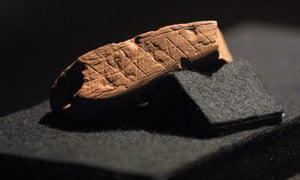Neanderthals ... Human Cousins
"When you have symbols, then you have language."
"For all practical purposes, [Neanderthal] they were modern humans, too."
"Neanderthals have disappeared. So have Fuegian Indians. So have Greenland Vikings."
"Population extinction has been a part of human history forever."
"The Aviones finds [Cueva de los Aviones, a cave in southeastern Spain] are the oldest such objects of personal ornamentation known to this day anywhere in the world. They predate by 20 to 40 thousand years anything remotely similar known from the African continent. And they were made by Neanderthals. Do I need to say more?"Joao Zilhao, archaeologist, University of Barcelona, Spain
 |
| Cave art breakthrough … a painting of a cow and horses at Lascaux, France. Photograph: Alamy |
Researchers have combined forces (University of Barcelona, University of Southampton, Max Planck Institute for Evolutionary Anthropology) have produced a study establishing the existence of evidence that primeval Neanderthals could boast one of the principal hallmarks of cognitive sophistication, for they were capable of producing painted cave art, a realization that they could think in symbols and for all we know they may also have succeeded in achieving other human milestones of which no trace has been preserved.
In the mid-1800s, when fossils linked to Neanderthals and examination revealed their low, thick brow ridge on their skulls, it seemed to indicate that they may have been proto-humans of low intelligence, incapable of cognition. Since then, however, discoveries to follow have indicated that in fact Neanderthals were possessed of brains as large as that of homo sapiens, but within shorter, stockier bodies.
Still, during the early 1900s it was commonplace for Neanderthals to be described as gorilla-like beasts, a mere extinct branch of near-humanity, but nothing like the well-formed, intelligent creatures that humankind was to become. Current evidence construed from fossils and DNA indicates, however, that both living humans of today and Neanderthals had descended from a common ancestor dating back roughly 600,000 years ago.
For several hundred thousand years, ancestors of living humans left evidence of stone axe tools and spear blades. Humans in Africa were showing signs of abstract thinking 70,000 years ago, colouring and piercing seashells for ornamental purposes. Modern humans began arriving in Europe from Africa some 45,000 years ago and they left ivory carvings and cave wall paintings, while Neanderthals became extinct 40,000 years ago, a fossil record from Spain to Siberia attesting to their presence.
It has only been in recent years that researchers have discovered evidence linking Neanderthals to symbolic thought processes with archaeologists discovering Neanderthals used feathers and bird claws with which to make ornaments. Some scientific skeptics opt to transcribe those discoveries as mere copies of original thought, preferring to believe that Neanderthals had taken inspiration from modern humans they lived beside.
Within caves in Spain ancient paintings were discovered over the past century and there researchers discovered the presence of flowstones, milky crusts of minerals on cave walls, which covered parts of artworks. Researchers scraped away samples for dating purposes from three caves, to discover some of the art to be over 64,000 years old, about 20,000 years earlier than the first evidence of modern humans in Europe.
It was deduced that the artwork was produced by Neanderthals. In a cave on the Spanish coast Dr. Zilhao discovered shells, drilled and painted with ochre. He and colleagues found a layer of flowstone atop the rock where the shell jewellery had been discovered. In testing the flowstone it turned out to be about 115,000 years in origin; the pierced and coloured shells held to be slightly older. Strong evidence the shells were produced by Neanderthals.
At one time in the historical record, researchers had concluded that Neanderthals had died out because they were incapable of manipulating their environment to aid in survival. Now it is understood that Neanderthals developed in parallel with modern humans in Africa. It appears that the illusion of inferiority leading to their extinction is unjustified and what led to their disappearance is now attributed to evolutionary mechanics.
 |
| Even older still … a piece of red ochre with a deliberate zigzag engraving from Blombos cave, South Africa. Photograph: Anna Zieminski/AFP/Getty |
Labels: Human Nature, Paleoarcheology, Research, Science

0 Comments:
Post a Comment
<< Home